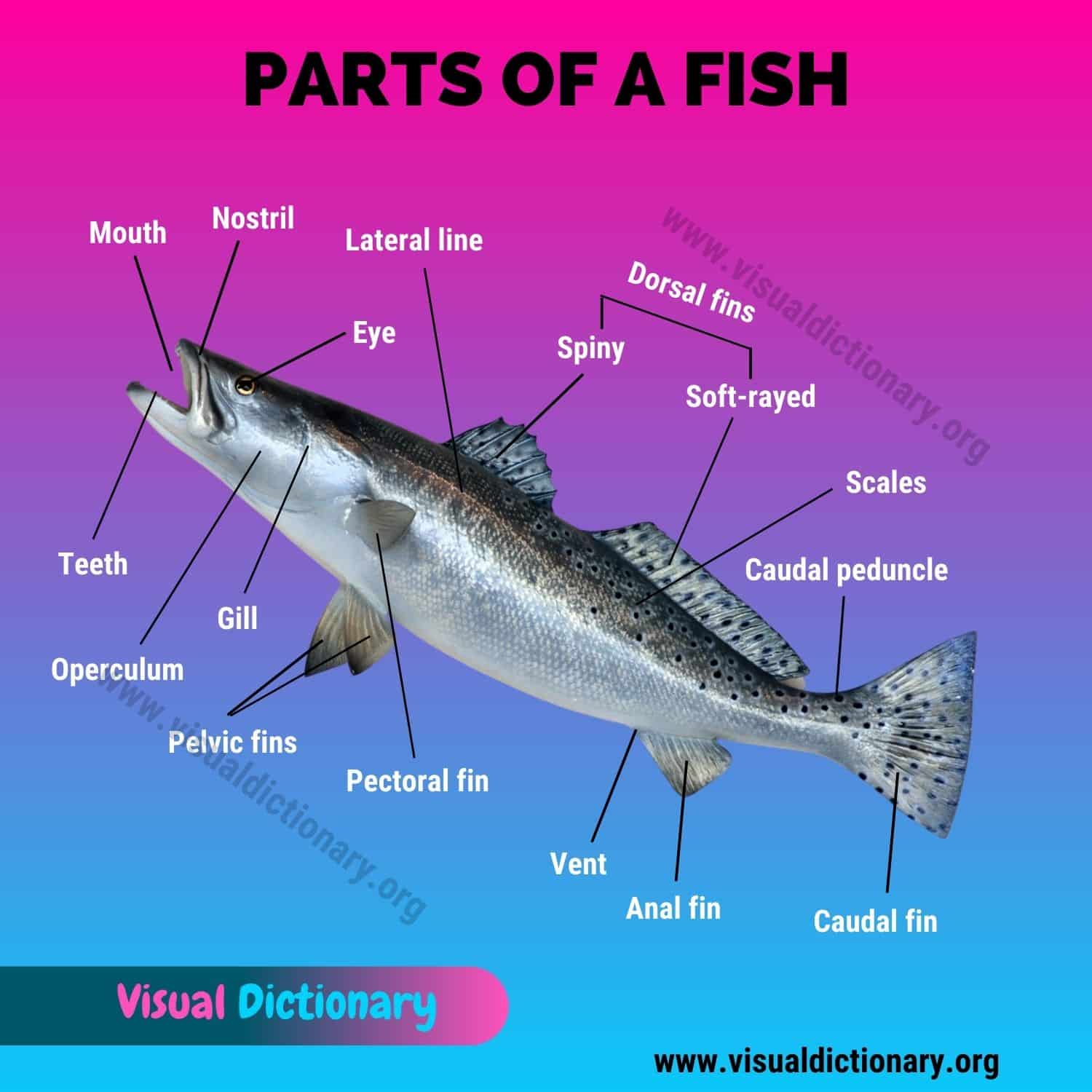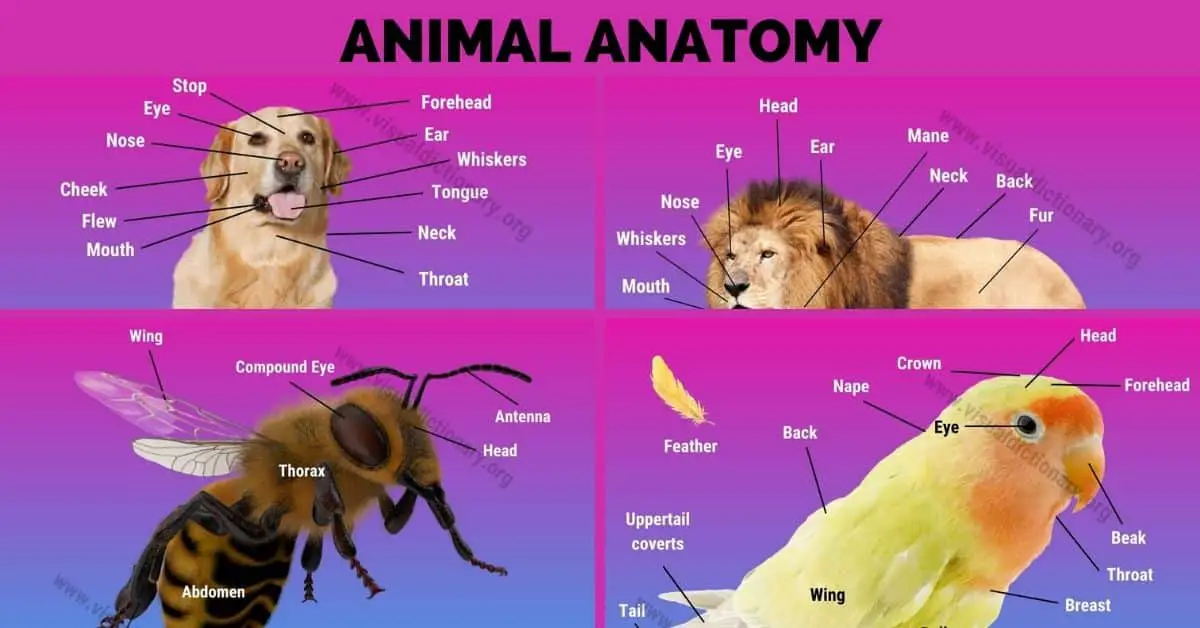Have you ever wondered what makes up a fish? Fish are fascinating creatures that come in a variety of shapes and sizes. In this article, we’ll be exploring the external parts of a fish and what they’re used for.
By understanding the external anatomy of a fish, we can gain insight into their behavior and how they interact with their environment. Whether you’re an English learner looking to expand your vocabulary or simply curious about fish, this article will provide a comprehensive overview of the external parts of a fish. So, let’s dive in and explore the fascinating world of fish anatomy!
Table of Contents
Fish
As we dive into the topic of fish anatomy, it’s important to have a basic understanding of what fish are. Fish are aquatic animals that breathe through gills and are covered in scales. They come in a variety of shapes, sizes, and colors, and can be found in almost every body of water on Earth.
Fish are cold-blooded, which means their body temperature changes with the temperature of the water they live in. They also have a lateral line system, which is a row of sensory cells that helps them detect vibrations and movements in the water.
Fish play an important role in the ecosystem as both predator and prey. They also provide a source of food for humans and other animals. It’s important to understand the anatomy of fish to properly identify species, assess their health and age, and learn about their behavior and habitat.
Fish Anatomy
Fish Skin and Scales
Fish skin serves many functions, including maintaining the osmotic balance, providing physical protection, coloration, containing sensory receptors, and helping with respiration in some species.
Fish scales are located laterally on the body and protect fish from attacks, parasites, and injuries they could receive from brushing up against objects in their environment. Scales come in various shapes and sizes and can be smooth or rough to the touch. Some fish, like sharks, have scales that are modified into teeth-like structures called dermal denticles, which help with hydrodynamics and protection.
Fish skin can also vary in texture and color. Some fish have smooth skin, while others have rough, bumpy skin. The color of fish skin can vary depending on the species and their environment. Some fish have bright, vibrant colors to attract mates or deter predators, while others have dull, camouflaged colors to blend in with their surroundings.
Fish skin also contains sensory receptors that help fish detect changes in their environment, such as temperature and pressure. Some fish have specialized skin cells called chromatophores that allow them to change color and blend in with their surroundings.
Fish Fins and Their Functions
Fins are used for various purposes, such as balance, movement, and steering.
Dorsal Fin
The dorsal fin is located on the upper side of the fish’s body and is often the first thing that comes to mind when we think of fish fins. This fin is primarily used for stability and helps the fish to maintain its balance while swimming. Some fish species, such as sharks, have multiple dorsal fins.
Pectoral Fins
The pectoral fins are located on either side of the fish’s body, just behind the gills. These fins are used for steering and movement and are responsible for the fish’s ability to turn, stop, and swim in different directions. In some fish species, such as angelfish, the pectoral fins are enlarged and used for propulsion.
Anal Fin
The anal fin is located on the ventral side of the fish, just behind the anus. This fin is primarily used for stability and helps the fish to maintain its balance while swimming. The anal fin is also used for braking and slowing down.
Caudal Fin
The caudal fin, also known as the tail fin, is located at the end of the fish’s body. This fin is used for propulsion and helps the fish to move forward. The shape and size of the caudal fin vary depending on the fish species. For example, some fish, such as tuna, have a crescent-shaped caudal fin, while others, such as sharks, have a heterocercal caudal fin.
Parts of A Fish | List
- Dorsal fins
- Spiny
- Soft-rayed
- Lateral line
- Scales
- Nostril
- Mouth
- Eye
- Pectoral fin
- Pelvic fin
- Anal fin
- Caudal fin
- Gill
- Teeth
- Caudal peduncle
- Vent
- Operculum
Frequently Asked Questions
What are the different fins of a fish and their functions?
Fish have various types of fins, each with a distinct function. The dorsal fin is located on the fish’s back and helps with stability and maneuvering. The anal fin is situated on the fish’s underside and aids in steering and stopping. The pectoral fins, located on both sides of the fish, are primarily used for steering and braking. The pelvic fins are located on the fish’s underside and help with balance and stabilization. The caudal fin, also known as the tail fin, is used for propulsion, allowing the fish to move forward.
How does the shape of a fish’s body affect its swimming abilities?
The shape of a fish’s body is crucial to its swimming abilities. Streamlined bodies, such as those of tuna and sharks, are ideal for fast swimming in open water. Flat bodies, such as those of flounder and rays, are better suited for life on the ocean floor. Eel-like bodies, such as those of eels and lampreys, are ideal for wriggling through narrow crevices and holes.
What is the purpose of a fish’s scales?
Scales serve several purposes for fish. They protect the fish’s skin from damage, parasites, and disease. They also help to regulate the fish’s body temperature and buoyancy. In some species, the scales can change color to camouflage the fish or to attract a mate.
What are the external features of a fish that help it to survive in its environment?
Fish have evolved many external features that help them survive in their environment. For example, their gills allow them to extract oxygen from water, while their lateral line system helps them detect vibrations and movements in the water. Some fish have camouflage coloring to blend in with their surroundings, while others have spines or venomous fins to defend against predators.
How do the eyes of a fish differ from those of other animals?
Fish eyes are adapted to their underwater environment. They are typically rounder and larger than the eyes of land animals, and they lack eyelids. Fish also have a special layer of tissue behind their retina that reflects light, allowing them to see in low-light conditions. Some fish, such as sharks, have an additional eyelid called a nictitating membrane that protects their eyes while still allowing them to see.
What is the function of a fish’s lateral line system?
The lateral line system is a series of sensory organs that run along the sides of a fish’s body. It allows fish to detect vibrations and movements in the water, helping them to navigate and locate prey. The lateral line system also helps fish to maintain their position in a school, communicate with each other, and avoid obstacles in their environment.
Related:







